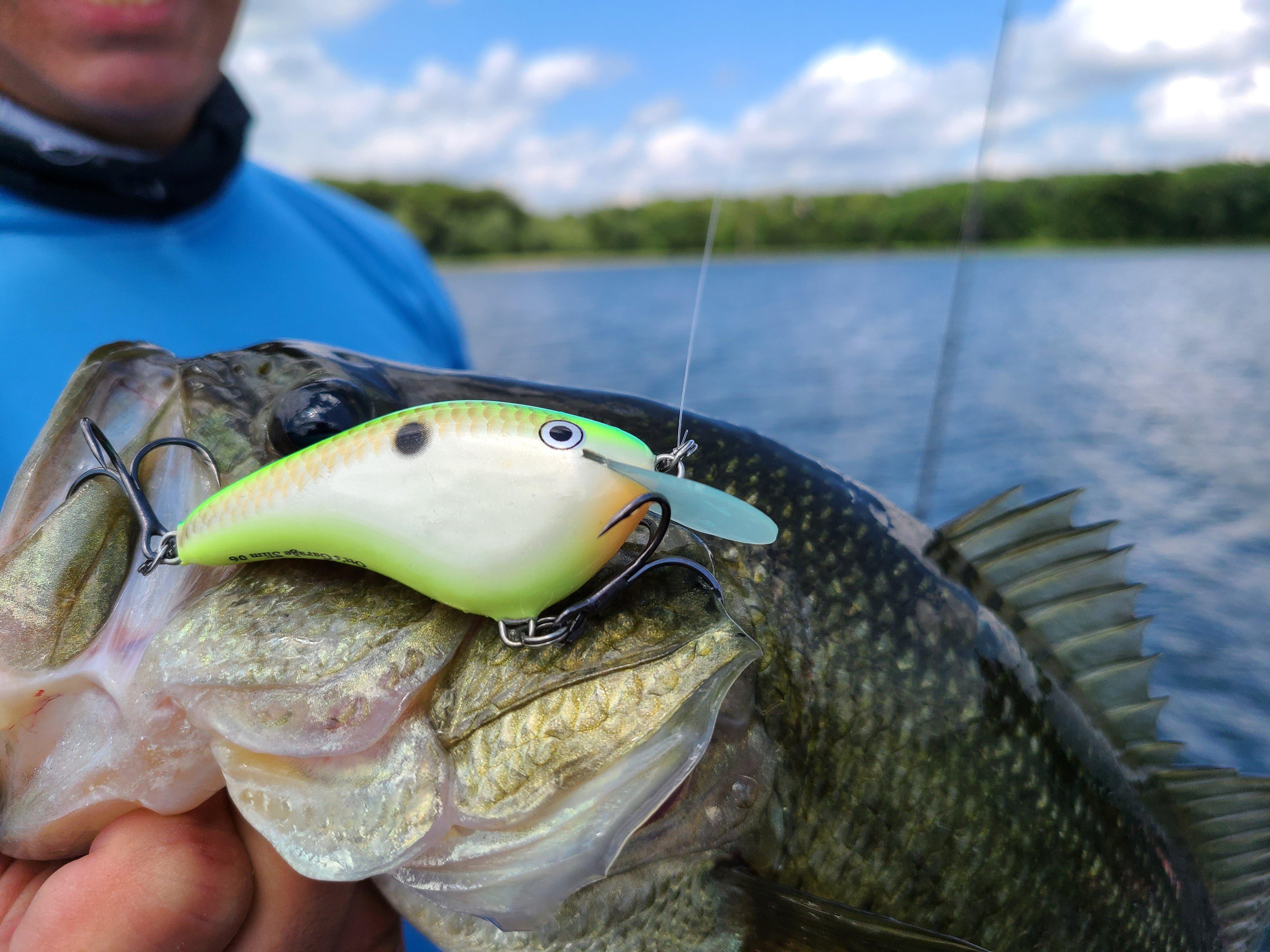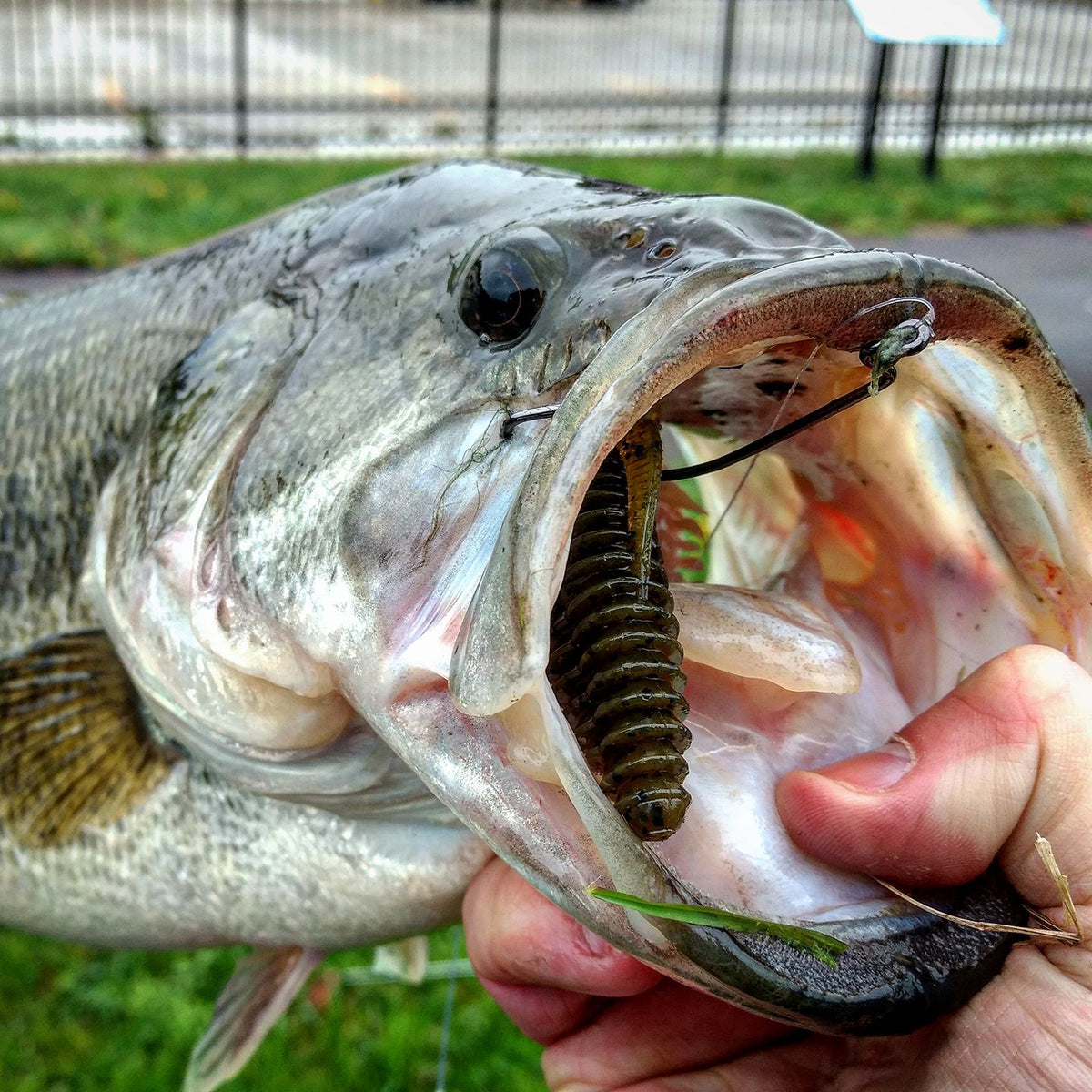Largemouth vs. Smallmouth: Species-Specific Best Bass Lures to Try
Discover the most effective Strategies for Selecting Bass Lures for Your Following Fishing Trip
Picking the right bass Lures can dramatically influence angling success. Fishermens should take into consideration numerous aspects, such as seasonal patterns and water clearness. Comprehending bass actions is crucial (Bass Lures). Selecting Lures that mimic natural victim can bring about far better outcomes. Lots of are uncertain regarding the finest techniques to carry out. What techniques should one prioritize to enhance their angling experience? The solutions depend on checking out particular problems and adapting accordingly
Understanding Bass Actions and Habitat
Comprehending the nuances of bass habits and habitat is necessary for any kind of angler intending to enhance their fishing success. Bass are frequently located in various settings, consisting of lakes, rivers, and reservoirs, where they look for framework such as submerged rocks, vegetation, and dropped trees. Their actions is heavily influenced by water temperature, light degrees, and offered forage.
During warmer months, bass have a tendency to be more energetic, often populating shallower waters, while in chillier months, they retreat to deeper locations. Furthermore, bass exhibit patterns of feeding, frequently being extra aggressive during dawn and sundown. They are opportunistic killers, preying on smaller fish, pests, and shellfishes. Understanding these factors can help fishermens determine prime fishing places, as well as the finest times to fish. Identifying bass habits in regard to their environment is important for successful fishing, assisting fishermens in making notified decisions about where to cast their lines.
Matching Lures to Seasonal Conditions
As anglers adapt their methods to changing periods, matching Lures to seasonal problems ends up being an important strategy for boosting angling success. In spring, when bass are arising from wintertime inactivity, fishermens commonly utilize spinnerbaits and shallow-running crankbaits to imitate the motions of prey. Summer season demands a change to topwater Lures or soft plastic worms, as bass seek color and cooler waters. During the loss, when bass are fattening up before wintertime, larger Lures that mimic baitfish can be efficient. Winter requires a more refined technique; jigs and slow-moving finesse baits commonly generate far better outcomes as bass end up being tired. Comprehending these seasonal patterns helps anglers pick the appropriate appeals, consequently raising their possibilities of a successful catch. By aligning appeal options with the all-natural actions of bass throughout the year, anglers can optimize their fishing experience and enhance their overall success on the water.
The Significance of Color Option
Shade option plays a critical function in bass angling, as it can substantially influence a fisher's success. Elements such as water quality, seasonal modifications, and the details choices of different bass types all affect which colors are most reliable. Comprehending these aspects permits fishermens to make educated choices that improve their angling experience.
Water Clearness Considerations
When the water quality differs, choosing the best bass attraction color becomes essential for drawing in fish. In clear water, all-natural shades such as shad or bluegill patterns often tend to be much more reliable, as they mimic the target bass are accustomed to seeing. Alternatively, in murky or stained water, brighter colors like chartreuse or fire tiger can improve visibility, making it less complicated for bass to detect the appeal. The contrast in between the attraction and the surrounding environment plays a substantial function in angling success. Anglers ought to also think about the moment of day; lighter colors might work much better in bright sunlight, while darker tones can be extra reliable during low-light problems. Adapting appeal color to water clarity optimizes the opportunities of a successful catch.
Seasonal Shade Patterns
How do seasonal adjustments impact bass actions and appeal performance? As temperature levels shift throughout the year, bass readjust their feeding habits and liked environments, making color selection crucial for effective angling. In springtime, when bass spawn, brilliant colors like chartreuse can stand out. Summer season commonly call for more all-natural colors, such as green pumpkin or shad patterns, as bass look for to assimilate with their surroundings. During autumn, vibrant colors like orange and red resemble the changing foliage, attracting bass as they prepare for winter. In wintertime, controlled tones such as grey or white might be more efficient, as bass end up being sluggish. Inevitably, comprehending seasonal color scheme allows anglers to choose Lures that reverberate with bass's existing habits, improving their opportunities of success.

Species-Specific Preferences
Understanding species-specific choices is crucial for anglers wanting to maximize their attraction option. Different bass varieties, such as largemouth and smallmouth, exhibit one-of-a-kind color preferences based upon their habitat and feeding behaviors. Largemouth bass typically prefer darker colors, particularly in murky waters, where colors like black and dark green resemble natural prey. In comparison, smallmouth bass are more probable to respond to brighter shades, such as chartreuse and orange, specifically in clear waters. In addition, water clearness and light problems can influence these preferences, making it necessary for anglers to adapt their lure color appropriately. By thinking about these species-specific choices, anglers can increase their possibilities of a successful angling trip, eventually improving their total experience on the water.
Choosing the Right Tempt Kind for Various Scenarios
Choosing the proper attraction kind for different fishing scenarios is essential for success on the water. Anglers need to take into consideration variables such as water clarity, climate condition, and the bass's feeding behaviors. For dirty water, darker-colored lures, such as spinnerbaits or jigs, can be efficient, as they produce a strong shape. In clear water, natural-colored Lures like soft plastics or topwater baits may attract cautious bass.
When angling in heavy cover, using weedless rigs or heavy jigs can aid browse with challenges without snagging. Conversely, open water circumstances might gain from crankbaits or swimbaits that can cover better distances. Additionally, throughout cooler months, slower-moving Lures often tend to be extra effective, while warmer problems might require faster retrieves. By adapting attraction choices to specific settings, anglers enhance their possibilities of an effective official statement catch.
Trying out Dimension and Activity

Fishermens commonly trying out a variety of actions and sizes to establish what works best under varying conditions. A slow, refined action may be ideal in cooler water, while a quick, aggressive recover might be extra effective in warmer temperature levels. By carefully observing the bass's responses to these variations, anglers can fine-tune their strategy and raise their chances of an effective catch. Ultimately, the best mix of size and activity can make a substantial difference on the water.
Reviewing Water Conditions for Better Draw Options
Recognizing water problems is vital for selecting the right bass attraction. Aspects such as water clearness and temperature can considerably influence fish behavior and feeding patterns. By evaluating these conditions, fishermens can make enlightened decisions that enhance their chances of a successful catch.
Assessing Water Clarity
Exactly how does water quality influence the effectiveness of bass lures? Water clearness significantly influences bass habits and the exposure of appeals. In clear water, bass have a tendency to be extra mindful, making natural-colored Lures more efficient as they resemble victim very closely. Anglers may pick lighter, subtler hues to avoid startling fish. Conversely, in dirty or tarnished water, more vibrant and more vivid colors stand apart, drawing in attention also in reduced presence conditions. Additionally, the kind of attraction can differ; slower-moving Lures might work much better in clear water, while faster, much more hostile presentations can tempt bass in murkier settings. Comprehending the quality of the water enables anglers to pick Lures that maximize their possibilities of success during their fishing journeys.
Recognizing Water Temperature Level
As water temperature varies, it straight influences bass habits and their feeding patterns, making it important for anglers to consider when selecting lures. Usually, bass choose warmer temperatures, usually in between 65 ° F and 75 ° F, where their metabolism is enhanced, causing enhanced feeding task. In cooler water, bass become lethargic and may favor slower-moving lures, such as jigs or soft plastics. Conversely, during warmer months, faster presentations like crankbaits or topwater Lures can be extra reliable. Anglers must likewise take into consideration seasonal changes; for instance, spring warming causes hostile feeding as bass prepare to spawn. By understanding how temperature affects bass, anglers can make enlightened choices on attraction choice, considerably improving their possibilities of success.
Tips for Organizing and Maintaining Your Entice Collection
While numerous anglers concentrate on picking the ideal Lures for their following fishing trip, keeping a lure and organizing collection is equally important for boosting efficiency and efficiency. A well-structured collection permits anglers to rapidly locate the Lures they require, minimizing time invested rummaging through deal with boxes.
To start, fishermens ought to classify Lures by type-- crankbaits, jigs, or soft plastics-- making it much easier to discover certain options. Utilizing tackle trays or boxes with flexible areas can assist keep whatever organized. Identifying containers streamlines the procedure additionally, aiding fast recognition.
Routine upkeep is also critical; fishermens must inspect Lures for indicators of wear, such as rusted hooks Going Here or harmed paint, and change them as required. Cleaning up Lures after each journey protects against wear and tear and makes sure long life. By executing these organizational and maintenance methods, fishermens can improve their fishing experience and guarantee their Lures are always in ideal condition.
Often Asked Inquiries
What Are the Ideal Brands for Bass Lures?
The most effective brand names for bass Lures include Rapala, Strike King, and Berkley. These brands are renowned for their high quality, effectiveness, and technology, appealing to both novice and seasoned anglers looking for effective angling experiences.
The Number Of Lures Should I Take on a Journey?
A regular fishing expedition must consist of around five to 10 lures, permitting versatility while staying clear of clutter. This selection must include various kinds and colors to adjust to transforming conditions and fish choices.
Can I Make My Own Bass Lures?
Yes, individuals can make their very own bass Lures utilizing various materials and techniques - Best Bass Lures South Africa. Crafting Lures enables for modification, making it possible for anglers to read the full info here explore shapes, sizes, and colors to match certain fishing problems and preferences
What's the Average Life-span of a Bass Draw?
The average life expectancy of a bass appeal differs, generally lasting from a few months to several years, relying on material top quality, usage frequency, and ecological conditions. Correct care can significantly expand a lure's use.
Are There Certain Lures for Night Fishing?
Yes, there specify Lures created for night fishing. Dark colors and Lures that generate resonances, such as spinnerbaits or jigs, usually bring in bass in low-light conditions, improving visibility and activating predacious impulses.
Alternatively, in dirty or stained water, brighter shades like chartreuse or fire tiger can improve exposure, making it simpler for bass to find the attraction. Larger Lures can bring in larger bass, while smaller sized Lures might be much more efficient for capturing smaller fish. In addition, the type of lure can vary; slower-moving Lures may work much better in clear water, while much faster, more aggressive presentations can attract bass in murkier settings. As water temperature fluctuates, it straight affects bass actions and their feeding patterns, making it essential for anglers to think about when choosing appeals. While numerous anglers focus on selecting the appropriate Lures for their following angling trip, keeping an appeal and organizing collection is just as essential for boosting performance and performance.